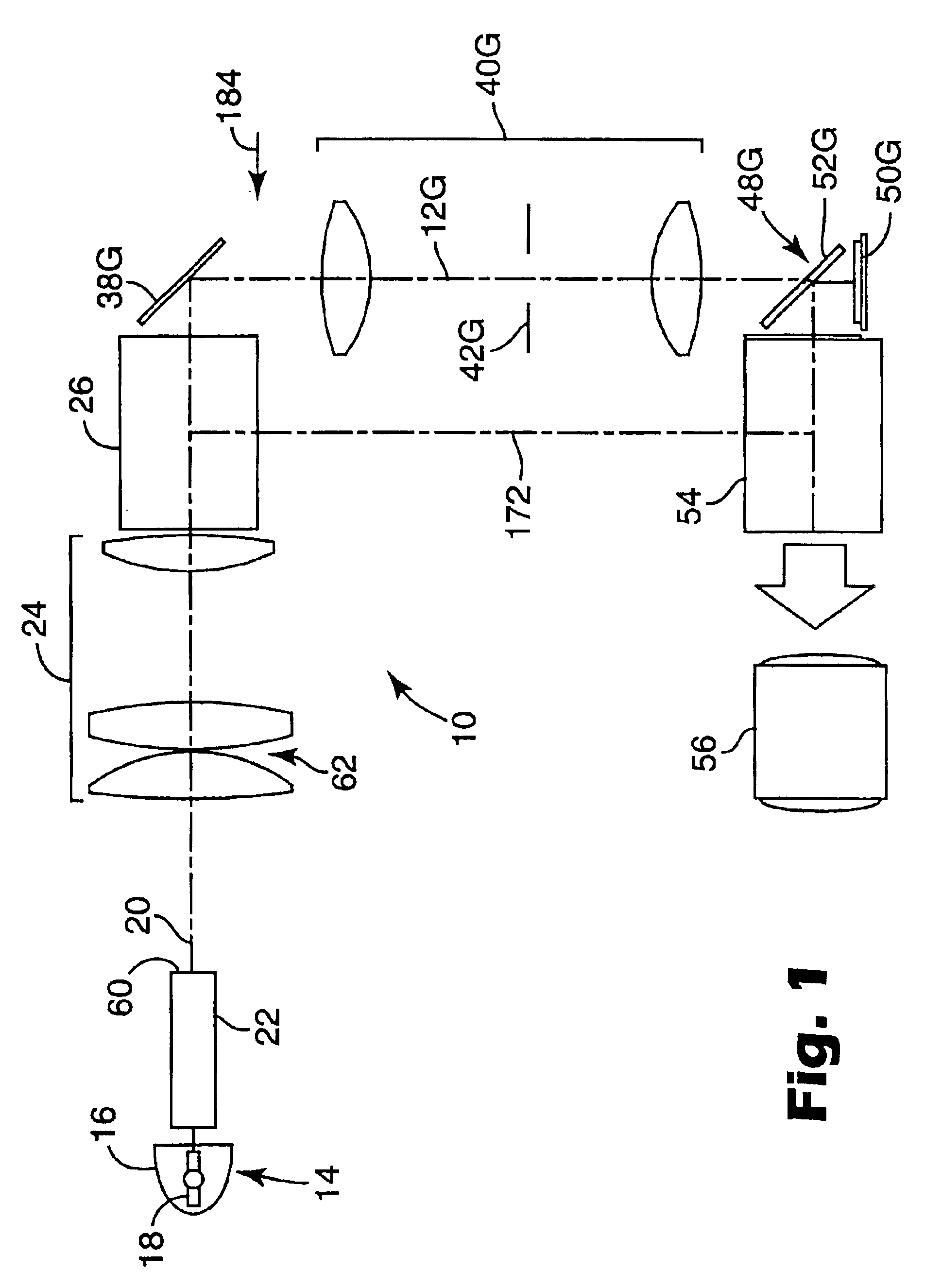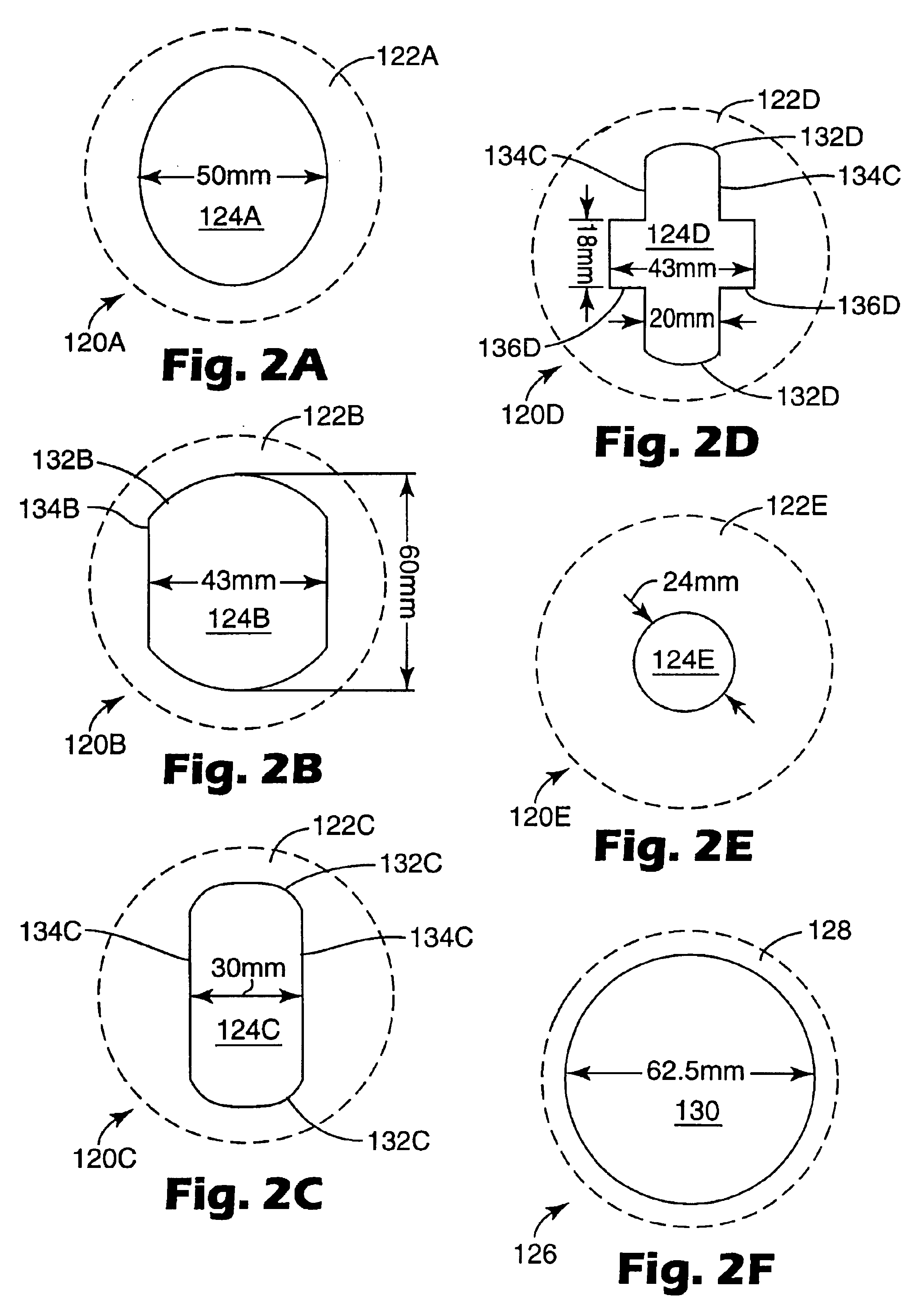Color component aperture stops in projection display system
a technology of projection display and color component, applied in the field of electronic projector optical systems, can solve the problems of reducing increasing costs, and reducing the range of operating temperatures, so as to reduce the contrast of reflective electronic projection displays and increase costs. , the effect of limiting contras
- Summary
- Abstract
- Description
- Claims
- Application Information
AI Technical Summary
Benefits of technology
Problems solved by technology
Method used
Image
Examples
Embodiment Construction
FIG. 1 is a diagram of an embodiment of a reflective projection display system 10 illustrating an example of an operating environment for the present invention. Projection display system 10 (sometimes referred to herein as projector 10) includes three color component optical paths 12 (only one shown) that correspond to the respective primary color light components red, green and blue. For purposes of clarity, FIG. 1 shows only one of the color component optical paths, which is designated color component optical path 12G to correspond to the green primary color component.
It will be appreciated that the red and blue color component optical paths will be the same as, but in places offset from, green color component optical path 12G. Elements of projector 10 that are specific to one primary color light component will be indicated by a corresponding alphabetic suffix (i.e., “R,”“G,” or “B”). Elements of projector 10 that are not specific to one primary color light component will not incl...
PUM
 Login to View More
Login to View More Abstract
Description
Claims
Application Information
 Login to View More
Login to View More - R&D
- Intellectual Property
- Life Sciences
- Materials
- Tech Scout
- Unparalleled Data Quality
- Higher Quality Content
- 60% Fewer Hallucinations
Browse by: Latest US Patents, China's latest patents, Technical Efficacy Thesaurus, Application Domain, Technology Topic, Popular Technical Reports.
© 2025 PatSnap. All rights reserved.Legal|Privacy policy|Modern Slavery Act Transparency Statement|Sitemap|About US| Contact US: help@patsnap.com



